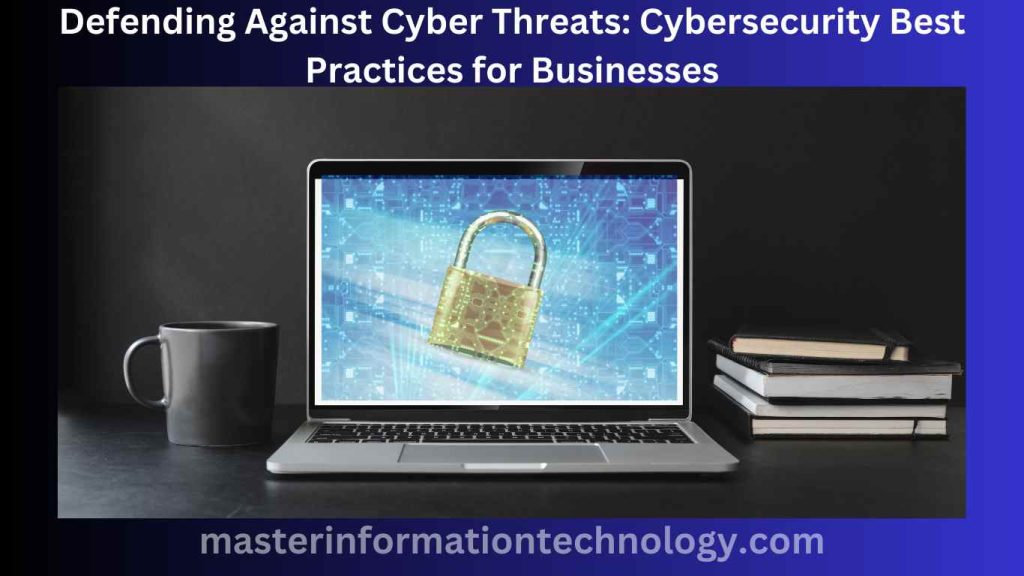
Share essential cybersecurity best practices for businesses to safeguard their sensitive data from cyber threats.
Introduction
In today’s digital age, businesses face a constant barrage of cyber threats that can compromise sensitive data, disrupt operations, and damage their reputation. As technology advances, so do the tactics employed by cybercriminals, making it essential for businesses to adopt robust cybersecurity practices. This article provides comprehensive insights into cybersecurity best practices that businesses can implement to defend against cyber threats effectively.
Importance of Cybersecurity for Businesses
Cybersecurity is a top priority for businesses of all sizes, as a single data breach can result in severe consequences, including financial losses, loss of customer trust, and legal ramifications. Implementing robust cybersecurity measures not only protects sensitive information but also ensures business continuity and fosters customer confidence.
Understanding the Cyber Threat Landscape
Before delving into cybersecurity best practices, it is crucial to understand the current cyber threat landscape. Cybercriminals use various techniques, such as phishing, ransomware attacks, and social engineering, to exploit vulnerabilities and gain unauthorized access to systems.
Cybersecurity Best Practices for Businesses
1. Conduct Regular Security Audits
Periodic security audits help businesses identify potential vulnerabilities and weaknesses in their IT infrastructure. These audits should encompass hardware, software, networks, and third-party services to ensure a comprehensive assessment.
2. Implement Strong Access Controls
Limiting access to sensitive data and systems is vital in minimizing the risk of unauthorized access. Employ robust authentication methods, such as multi-factor authentication (MFA), to enhance access controls.
3. Regularly Update Software and Patches
Cybercriminals often exploit known vulnerabilities in outdated software. Regularly update all software and apply security patches promptly to protect against known threats.
4. Educate Employees on Cybersecurity
Human error is a significant factor in cyber incidents. Conduct regular cybersecurity awareness training for all employees to educate them about potential threats and best practices.
5. Secure Network Perimeters
Implement firewalls, intrusion detection systems (IDS), and intrusion prevention systems (IPS) to secure network perimeters and detect suspicious activities.
6. Regular Data Backups
Regularly back up critical data to secure locations to ensure quick data recovery in case of a ransomware attack or data breach.
7. Encrypt Sensitive Data
Encrypting sensitive data adds an extra layer of protection, making it harder for cybercriminals to access and misuse the information.
8. Monitor Network Activity
Proactively monitor network activity to detect anomalous behavior and potential security breaches.
9. Create an Incident Response Plan
Develop a detailed incident response plan that outlines the steps to be taken in the event of a cyber incident.
10. Secure Mobile Devices
As the use of mobile devices increases, businesses must implement security measures to protect sensitive data accessed through these devices.
Related: Data Security Solutions: Protect Your Digital Assets
11. Test and Assess Security Controls
Regularly conduct penetration testing and vulnerability assessments to evaluate the effectiveness of existing security controls.
12. Implement Data Loss Prevention (DLP) Measures
DLP solutions can help prevent data leaks and unauthorized data transfers.
13. Use Secure Password Management
Encourage the use of strong, unique passwords and consider implementing password management tools to secure login credentials.
14. Monitor Third-Party Security
Assess the security practices of third-party vendors and partners to ensure they adhere to cybersecurity standards.
15. Stay Informed About Emerging Threats
Stay abreast of the latest cybersecurity trends and threats to implement timely countermeasures.
Conclusion
Cybersecurity is not a one-time effort but an ongoing commitment to protecting a business’s valuable assets. By implementing robust cybersecurity best practices, businesses can create a secure digital environment and defend against the ever-evolving landscape of cyber threats. Staying proactive, educating employees, and staying informed about emerging threats is crucial in maintaining the integrity and trust of both customers and stakeholders.
FAQs
What are the consequences of a data breach for businesses?
Data breaches can lead to financial losses, damage to reputation, and potential legal consequences.
Why is cybersecurity training important for employees?
Cybersecurity training helps employees recognize and respond to potential threats, reducing the risk of human error.
How often should businesses conduct security audits?
Regular security audits should be conducted at least once a year, or more frequently in rapidly changing environments.
Is multi-factor authentication necessary for all employees?
Yes, multi-factor authentication provides an extra layer of security and should be implemented for all employees.
What are the primary targets of cybercriminals?
Cybercriminals often target sensitive customer data, financial information, and intellectual property.
How can businesses recover from a ransomware attack?
Regular data backups and a well-defined incident response plan can aid in recovering from a ransomware attack.
